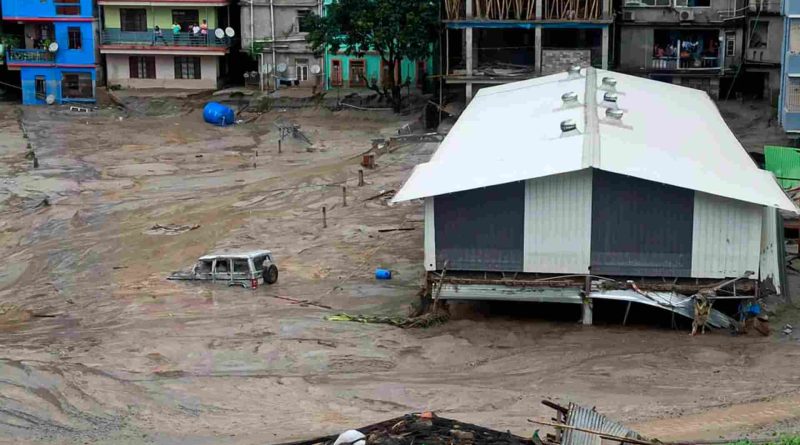Unveiling the Himalayan Catastrophe: Tragedy and Resilience in Uttarakhand’s Climate Crisis
In the rugged terrain of Uttarakhand, India, tragedy struck unexpectedly, echoing the looming specter of a climate crisis in the Himalayas.
A violent deluge of rock, debris, and freezing water claimed the lives of over 50 individuals this month, leaving nearly 150 others unaccounted for.
The calamity descended without forewarning. Mist veiled the landscape, and the ground trembled beneath their feet. Pushkar Singh, aged 37, fled for survival.
“As the river surged, carrying colossal boulders, trees crashed around us,” recounted Singh, a resident of Pang village, nestled in the heart of Uttarakhand’s mountainous expanse. “It was sheer terror.”
Singh’s account is but one amidst the chaos that befell Uttarakhand, home to over 10 million inhabitants in northern India. An onslaught of rock, debris, and icy water wreaked havoc, demolishing bridges and a power facility. Official tallies mourn 58 casualties, while the search for the missing persists into its second week.
Global experts pore over satellite imagery, striving to decipher the triggers of this avalanche of destruction. Yet, amidst their analyses, one stark reality emerges—the perils of development in regions vulnerable to the accelerated impacts of climate change. The Himalayan range, the Hindu Kush, and the Tibetan Plateau, collectively termed the “Third Pole,” harbor the world’s largest repository of glacial ice outside the polar regions.
This frozen reservoir, however, is no bastion against warming temperatures. Recent decades have witnessed regional warming rates outpacing the global average. The repercussions are dire—melting glaciers, burgeoning glacial lakes, and heightened risks of landslides and floods. Environmental advocates decry the proliferation of dams, power ventures, and infrastructure projects, which imperil millions.
Experts attribute the cataclysmic flooding to the collapse of a rock section and a “hanging glacier”—a mammoth ice mass—along a steep incline. Hurtling into the valley at breakneck speed, the mass collided with glacial sediment, birthing a torrent of slush that surged downstream into the Rishiganga River.
“The deluge resembled a tsunami,” remarked Kalachand Sain, director of the Wadia Institute of Himalayan Geology, recounting his team’s field study.
While climate change remains a plausible catalyst, its role remains enigmatic. Ice and permafrost stabilize mountainous terrains, and their thawing can precipitate instability. Yet, attributing causality to rising temperatures remains conjectural, as landslides and avalanches are not uncommon occurrences.
Amidst the chaos, members of the Indo-Tibetan Border Police facilitated crossings over the Rishiganga, as the ravaging waters wreaked havoc on hydropower installations and trapped laborers in tunnels for days.
Baburam Saini, anxiously awaiting news of his brother’s fate, epitomizes the agony that grips the region—a sentiment echoed by Mylène Jacquemart, a scientist at the University of Colorado, who laments the unfolding crisis as emblematic of broader climate perils.
The pace of glacial retreat in the Indian Himalayas has surged in the 21st century, with the Nanda Devi Biosphere Reserve bearing witness to profound ecological upheaval. Glacial losses are palpable, with glaciers receding at an alarming rate, leaving behind desolate landscapes.
This recent catastrophe serves as a stark reminder—a testament to the relentless advance of the climate crisis. Abinash Mohanty of the Council on Energy, Environment, and Water underscores the mounting frequency and intensity of extreme events, which underscore the urgent need for concerted action.
Ravi Chopra, of the People’s Science Institute, decries the disaster as a dual tragedy—natural and man-made. While rock and ice cascaded inexorably, encountering human-made barriers intensified the devastation—a somber indictment of shortsighted development practices.
As Uttarakhand grapples with the aftermath, the chief minister’s plea against politicizing the tragedy rings hollow for those whose lives hang in the balance. For Pushkar Singh and countless others, the specter of catastrophe looms large—an ever-present reminder of the precariousness of existence amidst nature’s fury.

